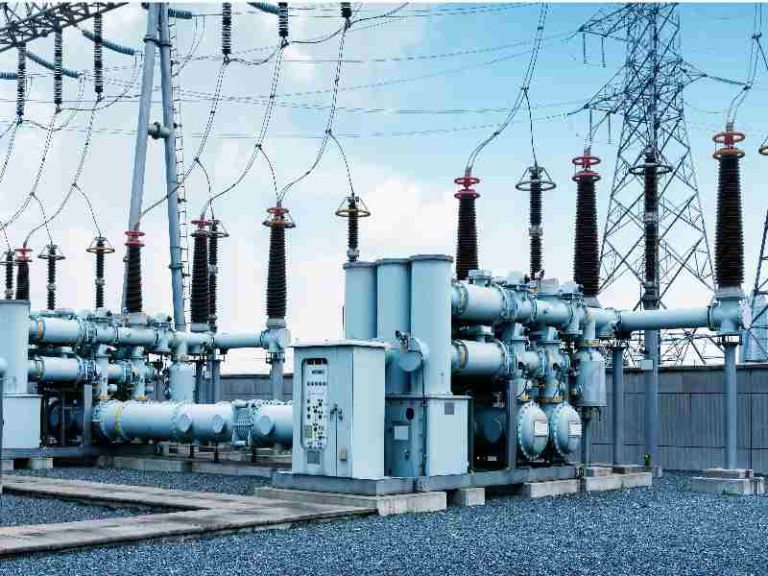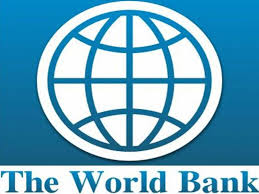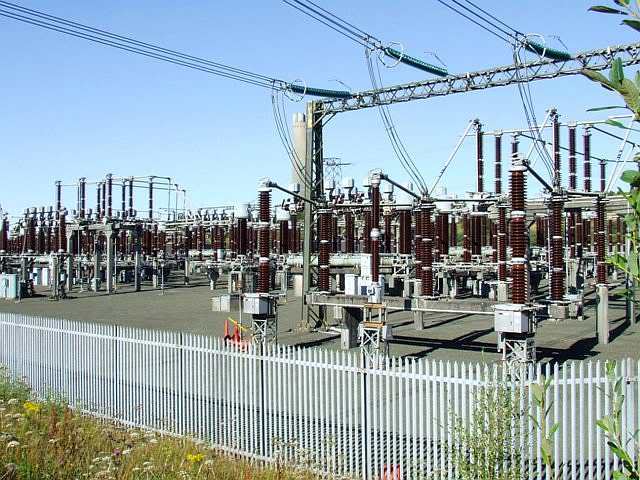Nigerians woke up on Wednesday, May 8, to a nationwide outage that cut off power from many homes and factories, leading to reduced load allocations to the distribution companies (DisCos).
About 5:29 am the following day (Thursday, May 9, 2019), the grid collapsed again, compounding the nation’s energy challenge. Checks revealed that the country’s power grid had collapsed no fewer than nine times in 2019.
In January alone, the country’s power grid collapsed twice while at least two major collapses were recorded in April.
Investigation shows that the nine power grid collapses witnessed this year were among at least 206 of such incidents that have been recorded since 2010. Scores of the ‘Total Grid System Collapse’ have occurred after the entire electricity grid goes off for several hours. There were also cases of ‘Partial Grid System’ Collapse’ when a section of the country was thrown into darkness for hours due to major transmission line trips. 206 collapse in 9 years Between 2010 and 2019, Nigerian electricity consumers have had to contend with 206 power grid collapses, nine of which occurred in 2019, records obtained from the System Operator (SO), a section of the Transmission Company of Nigeria (TCN), indicate.
A breakdown of the 206 grid collapses, which often led to a power cut for a whole region or even the entire country, shows that 109 of the incidents occurred from 2010 to 2013, while 97 others were recorded from 2014 to 2019. The country went into total darkness 22 times and recorded 20 partial outages in 2010. The grid had 13 incidents of total collapse and six partial incidents in 2011. By 2012, there were 16 total collapses and eight partial ones. In 2013 when preparations for the privatisation were topmost, there were 22 total power grid collapses while partial trappings occurred twice. The post-privatisation era also had its fair share of system collapse.
Although the situation improved in 2014 as records show, there were nine total collapses and four partial ones. By 2015, the trouble persisted with a record of six total and four partial collapses. It became worse in 2016 when the grid tripped for 22 times and went off partially six times.
Investigations further revealed that in 2017, there were 15 total, and nine partial collapses, while last year, 12 total collapses were recorded, with one partial collapse. At least nine total collapses have been recorded this year, four of which occurred in January. The five others were spread across February, April, May, June, and August. The total collapse on June 30, which dropped grid power to 127MW, was traced to a fire outbreak at the Benin transmission substation in Edo State.
On August 30, the national electricity grid recorded another total collapse, throwing the country into darkness for about 10 hours. It was a total collapse as power generation on the grid dropped to 20MW.
Grid limitations: 17,500MW lost in 76 months
Analysis of the historical generation data from the Association of Power Generation Companies (APGC) indicates that the GenCos could generate 38,546 megawatts (MW) from November 2013 to December 2018. While the national grid took 20,960MW, a huge quantum of 17,582MW, representing 45 percent of the total GenCos’ capability was not put into the grid due to the fragile transmission and distribution networks. Onitsha, other hotspots for grid collapses The Alaoji to Onitsha and Calabar transmission lines have been observed to be among the major lines where frequency disturbances have been recorded since 2010.

Daily Trust on Sunday visited some of these hotspots to observe the lines and speak to residents around the areas. At the TCN 330/132 kilovolts (kV), Awada substation in Onitsha in Anambra State, our reporter observed that the huge facility connects the 330KV transmission line from the Alaoji substation in Abia through parts of Imo to Onitsha. Alaoji harbours a 500MW GenCo under the National Integrated Power Plant (NIPP). Nearby is the 140MW Ariaria power GenCo that is yet to be put on the grid. Enugu DisCo connects to get supply from the Awada-Onitsha transmission substation. Another 330kV line leaves the Onitsha substation through Asaba to the Benin City substation. Electricity customers are fed from the Enugu DisCo’s facility with 33kV lines and stepped down to 11kV and 415V that enters into household connections across the various communities.
The assistant general manager at the TCN, Awada substation, Engr. Mike Anigbo, said he was not permitted by the Enugu transmission region to speak, but after much pressure, he tersely said: “We have enough energy to serve our customers for 24 hours a day,” without explaining what that meant. Another official who won’t reveal his identity confirmed system disturbance on the Alaoji transmission, which he said was not built by the TCN but by the Niger Delta Power Holding Company (NDPHC), under the NIPP, a Federal Government initiates that built the Alaoji plant. “Most times because the line was not well built, there are occasional disturbances which affect a part of the national grid. The new management of the TCN is making procurement to rehabilitate that line to stop that,” he said in confidence.
It was observed that tower number 5 of the Onitsha-Asaba transmission line, which collapsed in 2017 after a fire incident from a waste dumpsite, caused a system disturbance, but it was fixed. Mr. Uche Okonkwo, a nearby resident, said apart from common dumpsites around power lines, flood in the swampy terrain of the Niger River could pose a threat. Stretch of 132kV transmission lines in Edo, Zamfara, others Experts in the electricity industry say the long stretches of the 132KV line could cause transmission losses and low voltage if more load points are connected to that line without a transmission substation or an injection substation.
It was observed that Benin City to Okpella in Edo State, stretching to Okene in Kogi State, is on a 132kV line. The TCN has four substations in Benin, Irrua, Auchi, and Okpella before the 132/33kV line stretches to Okene. A former staff of the defunct Power Holding Company of Nigeria (PHCN), Engr. Ibrahim Ganiyu, said the long stretch of 132KV line could cause transmission losses and low voltage if more load points are connected to that line without a transmission substation or an injection substation. Benin has a 330/132/33kV substation; Irrua substation has a 60-mega volt-ampere (MVA) and 30MVA transformer, while there is a 40MVA transformer at Auchi. Okpella has a 15MVA transformer upgraded to 60MVA in September 2018, officials said. It was to complement the rising demand for Bua and Dangote Cement companies in the area. In Auchi, Okpella and its environs, residents, and customers of Benin DisCo complain of poor supply and high electricity bills.
Muhammed Momoh in Auchi said there was low voltage supply. Mr. Felix Eze, who operates a joint, said business operators in the area relied on generators to power their businesses. “At times, we get it beyond three hours in the day time and three hours at night, but it is not always regular,” Joseph Ovie in Okpella said.
The lack of a mega 330kV transmission substation and a line is also affecting Ekiti State, as a long line of 132kV line stretches through it from Kogi State. Surveys on the route from Sokoto State, up to Gusau in Zamfara State and Funtua in Katsina State, reveal long winding 132kV line that stretches through. A tower in that line collapsed in November 2018, threatening the power supply in the axis. The situation is the same for Lafia to Akwanga, and from Keffi to Mararaba in Nasarawa State.
There was low voltage and poor supply in the North-East states until the TCN commissioned two 330kV transmission substations in Yobe and Maiduguri early 2019. Officials of Yola DisCo said there was more bulk power to supply to customers. Residents have been amazed at the improved power supply in Borno, Adamawa and Yobe states, with some of them, fearing they would be overbilled over the ‘abnormal’ supply. Record of grid allocation in the current ‘Multi-Year Tariff Order (MYTO) 2015’ shows that Yola DisCo, which covers a major section of the North-East region, gets 3.5per cent daily allocation from the national grid.
However, the DisCo’s managing director, Mustapha Baba Umara, at the commissioning of the 330kV Damaturu substation in January 2019, said the previous line inadequacy had hindered enough bulk power distribution beyond the state capital of Yobe, which is similar in other states within its franchise area. Official records also show that voltage instability occurs at another NIPP transmission line. The Ikot Ekpene (Akwa Ibom) to Ugwuaji (Enugu) to Apir (Benue) to Jos line has frequent disturbance, a TCN report shows.
To arrest this, the TCN managing director, UG Mohammed, said three reactors were being installed in Ikot Ekpene and Jos to stabilise the line.
FG borrows N715bn to expand the grid
The Federal Government would have spent N715 billion external loans by 2021 on the TCN electricity transmission projects to raise the grid from 8,100MW to 20,000MW. This excludes capital releases in the annual budgetary appropriations. The World Bank lent Nigeria $300 million (N108.6bn) in 2010 for the Nigeria Electricity and Gas Improvement Project (NEGIP), which ended in December 2018. The Japanese Agency for International Cooperation (JICA) gave 1.317bn Japanese Yen or $12.4m (about N4.5bn) grant for the TCN to install capacitors and switch gears at the Apo (Abuja) and Keffi (Nasarawa State) substations in April 2018. They have since been commissioned. The TCN has raised another $1.661bn (N601.3bn) multilateral loans to increase capacity through the Transmission Rehabilitation and Expansion Programme (TREP).
The World Bank is the highest donor with $486 million for the Nigeria Electricity Transmission Project (NETAP) and $27m for the North Core project. The African Development Bank (AfDB) is giving $410m; French AFD and EU will give $330m; AFD has given another N170m for the ongoing Abuja transmission ring scheme; JICA pegged 238m for Lagos/Ogun transmission project.

NERC fails to approve the TCN spinning reserve for 13 months
In May 2019, the TCN lamented that despite writing to the Nigerian Electricity Regulatory Commission (NERC) to quickly approve a 250MW spinning reserve procurement to tackle the grid system collapse, NERC did not respond for 13 months.
Daily Trust on Sunday gathered that the TCN got initial bidding approval from the NERC in July and called for bidders in August 2018. However, after bid evaluation, the NERC only called for public comments on September 30, 2019, to consider the spinning reserve in an ongoing extraordinary tariff review for the TCN and the DisCos. For over four years, the national grid has been left at zero and at times 40MW of the spinning reserve to cushion system frequency disturbance before a collapse, records show. “We don’t have a spinning reserve to grapple with this, so we often use the manual control method when the frequency becomes high,” an official of theTCN-SO told Daily Trust. The official said the spinning reserve would ensure fluctuations on the national grid are managed to prevent future system collapse.
TCN, DisCos bicker overload rejection
Recurring system collapse has been a source of conflict for the TCN and the DisCos, our investigations revealed. After the June 30, 2019 system collapse, Sunday Oduntan, a lawyer and the spokesman for the Association of Nigerian Electricity Distributors (ANED) blamed the TCN.
“The DisCos remain available to offer their technical assistance to the TCN to ensure that our valued customers do not remain in darkness,’’ said the ANED, adding that DisCos have invested over $1.4bn in their system.
The TCN, on its part, has canvassed for the recapitalisation of DisCos, saying the 11 DisCos needed $4.3bn to match the transmission network. In the SO’s daily operational reports and document analysed for over six months of 2019, it was found that over 1,500MW energy is rejected by DisCos daily.
DisCos inhabit poor interface, obsolete networks
The DisCos’ association told our reporters that the TCN analogue system had caused 5,311 interface disruptions in a DisCo within 18 days of September 2019. However, we found that DisCos’ networks are rife with obsolete and inadequate equipment. Documents accessed at the NDPHC reveal this inadequacy in many places, including Kabba (Kogi), Lafia (Nasarawa), where DisCos fail to operate such networks that could boost power supply to Nigerians.
Checks show that in Abuja, it took over one year for the Abuja DisCo to connect to the added 60MVA TCN Katampe transformer. Connecting to the additional 120MVA transformer at TCN, Suleja substation was also delayed by Abuja DisCo; Ibadan DisCo also delayed connecting to the upgraded Abeokuta substation. A memo addressed to the erstwhile Minister of Power, Works and Housing, Mr. Babatunde Fashola on May 22, 2019, shortly before he left office, indicted the DisCos’ network inefficiency. The TCN, in the letter seen by our reporters, stated that out of the 737 total interfaces where transmission facilities deliver power to distribution facilities, 421 have adequate protection but 316 others have not.
Plan on course to remedy constraints – TCN
Speaking to Daily Trust on Sunday about efforts to improve the system, the managing director of the TCN, Mr. Usman Gur Mohammed, said they had delivered 67 power transformers that added 3,100MW capacity to the transmission grid since 2017.
According to documentary records seen when our reporters tracked the locations for 59 of those with 3,399MVA capacity, the TCN installed 14 transformers in the South-West with a total of 1,280MVA energy transmission capacity. In the South-South, it installed seven units with 490MVA capacity; another five units of 289MVA capacity were installed in the Southeast. In the North-West, the TCN installed 14 transformers that could deliver 750MVA energy to the DisCos; it installed seven transformers with 590MVA capacity in the North-East and then added 12 units with 800MVA energy wheeling capacity in the North-Central region.
However, the general manager, Public Affairs at the TCN, Mrs. Ndidi Mbah, promised to get back to us over inquiries on the curbing system collapse but failed to do so despite several reminders. The DisCos, under its association, the ANED, have denied any wrongdoing. Its spokesman, Chief Sunday Oduntan, said load rejection in some cases was a business decision, accusing the TCN of dumping load where the DisCos do not have much electricity customers to pay for energy. The DisCos said the TCN has never wheeled sufficient energy to meet the DisCos’ energy off-take assumptions specified under the Multi-Year Tariff Order (MYTO) 2015.
The ANED referred to the Siemens “Electrification Roadmap for Nigeria” report of May 7, 2019, stating that, “Today, power distribution by the DisCos’ to end-customers is limited by power in-feed from the TCN.”
The general manager, Public Affairs at the NERC, Mr. Usman Abba-Arabi, did not respond to inquiries over the NERC delay to approve for the TCN to procure the needed 250MW to stabilise the power grid. Arabi, who promised to get back to our reporter, never did so in spite of repeated calls thereafter.
Power system, the network still fragile – Amadi
A former chairman of the NERC, Dr. Sam Amadi, said the frequency of outage in the electricity sector was evidence of the fact that the power system and its network were still very fragile. He said, “Obviously, we don’t have enough reserve because we are jetting at a margin, meaning that if we take off 400, 300 or 200MW regularly from available generation it will deplete the amount of power supplied to the grid.”
He said during his tenure at the NERC, from 2010 to 2015, “We had a pricing mechanism that was part of the MYTO framework. The ancillary service market is still underdeveloped in the sector. That is the other contributor to the system collapse.” He also confirmed cases of energy rejection, saying, “When we were there we set up a task force to design a commercial regulatory solution to the rejection of load by DisCos.”
The energy expert advised that the situation requires close monitoring by the NERC.
This report is part of a collaborative investigative series by Daily Trust, the International Centre for Investigative Reporting (ICIR), Premium Times and The Cable, facilitated by the Wole Soyinka Centre for Investigative Journalism (WSCIJ) under its Regulators Monitoring Programme (REMOP) for the electricity sector, with support from the John D. and Catherine T. MacArthur Foundation.






